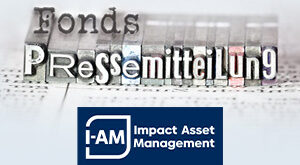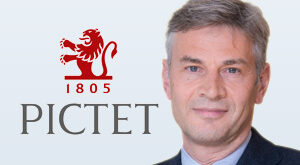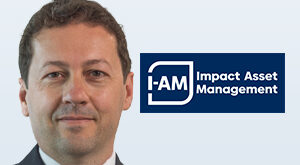
![]() SJB | Korschenbroich, 01.02.2022.
SJB | Korschenbroich, 01.02.2022.
Aktien der Asien-Pazifik-Region (ex Japan) beendeten das vierte Quartal 2021 in gedämpfter Stimmung. Investoren agierten aufgrund der neuen Corona-Variante Omikron sowie angesichts nahender US-Zinserhöhungen tendenziell vorsichtig. Trotzdem gelang es dem Fidelity Asia Pacific Opportunities Fund A Acc EUR (WKN A0NFGE, ISIN LU0345361124), sich im Berichtsquartal um +7,00 Prozent zu verbessern, während die Benchmark nur um +1,10 Prozent zulegte. FondsManager Anthony Srom hat sich in seinem Fonds auf attraktiv bewertete Unternehmen mit überdurchschnittlichen Wachstumsraten und hoher Ertragskraft spezialisiert, die er unter antizyklischen Gesichtspunkten auswählt. In seinen aktuellen Managersichten für Dezember analysiert er die Veränderungen in der Portfoliostruktur und untersucht die Positionierung des in der FondsStrategie SJB Surplus enthaltenen Fidelity-Fonds.
Market Environment
Asia Pacific ex Japan equities ended the last quarter of 2021 on a subdued note amid concerns over COVID-19 cases resurfacing globally. Investors remained cautious given rising fears of a potentially vaccine-evading, highly mutated COVID-19 variant, Omicron. Sentiment further weakened across the region after US Federal Reserve (Fed) Chairman Jerome Powell hinted that the central bank would tighten its monetary policy. Nevertheless, towards the end of the period, expectations of an economic recovery and initial studies suggesting less severity of the Omicron variant boosted investor sentiment. Against this backdrop, Chinese equities slid sharply. In an attempt to support economic growth, the People’s Bank of China (PBOC) cut the benchmark lending rate for the first time since April 2020. The central bank has also lowered the reserve requirement ratio. Hong Kong equities ended the period lower due to its close linkages with China. Stock markets in South Korea also slid, while Indian equities fared better than the broader index. Encouragingly, Taiwanese equities gained momentum, primarily driven by robust growth in the semiconductor industry, which benefited from strong fifth-generation (5G) related demand. Australian equities ended the period higher and were relatively resilient over the quarter. At a sector level in the region, health care, consumer discretionary and energy were notable laggards, while information technology (IT) led gains.
Fund Performance
The fund delivered returns of 7.0%, while the index returned 1.1% over the quarter. Abating regulatory concerns and structural growth prospects supported the performance of selected high-conviction holdings. Of note, security selection in the materials and information technology sectors added value.
Long-term growth prospects attracted investor interest
The exposure to semiconductor chipmaker SK Hynix lifted performance. Investor sentiment is supportive of its structural growth prospects and a pickup in demand for memory chips. China’s baijiu producer Kweichow Moutai added value. Investor sentiment was buoyed by the appointment of a new chairman who pledged a series of long-term reforms, as well as improved marketing and pricing.
Policy easing supported property related stocks
Over the year, the Chinese property sector faced regulatory headwinds. News of regulatory issues appears to have abated and a Chinese central bank rate cut was welcomed by investors, supporting the share price of property related companies. Consequently, positions in building materials group Beijing Oriental Yuhong and paint manufacturer SKSHU Paint added value.
Selected positions detracted from relative returns
The position in India’s leading private lender HDFC Bank held back gains as investors rotated into other financial companies. The exposure to China Merchants Energy Shipping (CMES) detracted from performance. While its bulk shipping segment is doing well, demand recovery for crude oil is yet to reach a meaningful level. Moreover, the scrappage of aged vessels is being delayed, restraining any increase in freight rates for very large crude carriers (VLCCs).
Fund Positioning
The fund focuses on bottom-up stock selection and favours companies that have an understandable business model, above-average earnings growth relative to market expectations and the ability to allocate capital effectively to increase returns on equity (RoE) over time. There is also a preference for companies trading at attractive valuations.
Retained positions in semiconductors and selected materials stocks
Semiconductor equipment maker ASML is effectively a monopoly in leading-edge lithography industry with high barriers to entry due to technological advantages, long standing customer relationships and high capital intensity. SK Hynix is a beneficiary of optimism towards a favourable memory pricing environment as demand in the server segment rebounds in a tightening supply environment. . The exposure to MediaTek was scaled up. It has an encouraging product line and will gain from a pick-up in 5G demand. Precious metals royalty and investment company Franco-Nevada has a highly diversified royalty asset base with consistent returns and is run by an experienced management team.
Added to long-term winners
The allocation to Focus Media Information Technology was increased. It is expected to gain from the high utilisation rate of its network of screens as business activity improves. A position was also purchased in HDFC Bank given its long runway for growth. It has a robust deposit franchise, solid asset quality and is a good business that stacks up very well versus other regional banks. Conversely, the holding in Alibaba Group was sold as its investment thesis broke and Midea was reduced on strength to take profits.




